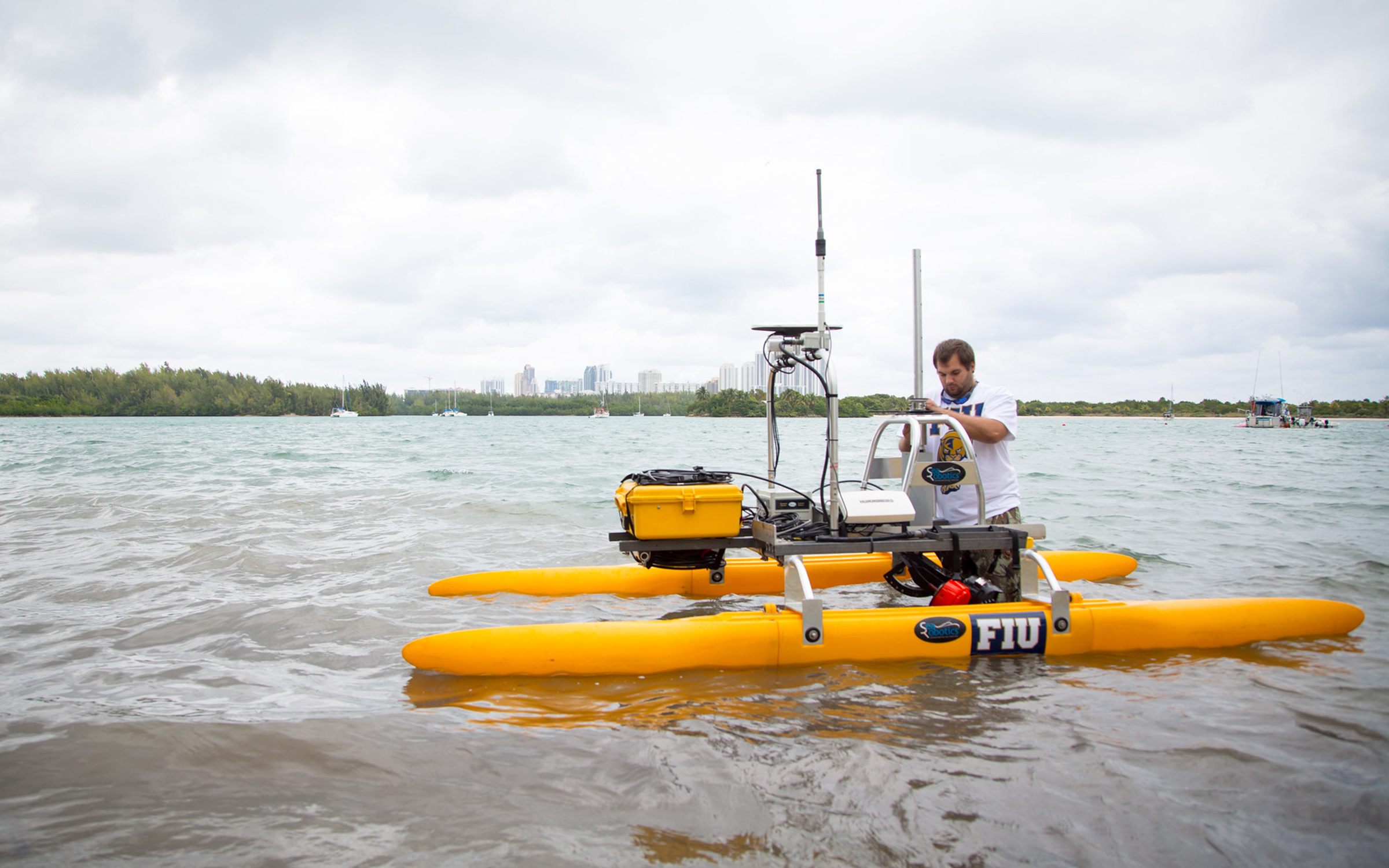- Title: From Aggregations to Individuals: Exploring Migrating Deep Sea Scattering Layers Through Multiscale-multimode Technologies in the Gulf of Mexico
- Principal Investigator: Kevin Boswell
- Funding Amount: $590,110
- Funding Source: National Oceanic and Atmospheric Administration (NOAA)
- Timeline: 09/01/18–08/31/21
This project develops and evaluates advanced capabilities that support the exploration of mesopelagic and deep-ocean ecosystems. We develop and simultaneously deploy multiple autonomous platforms to collect high-resolution acoustic backscatter and optical data within the largely unexplored mesopelagic biome of the Gulf of Mexico, and in particular near the De Soto Canyon.

The margins of oceanic basins are ecologically significant and generally characterized as biodiversity hotspots, are physically dynamic and can mediate important biogeochemical processes that link primary consumers with mobile, apex predators. Despite being ecologically important, these regions remain largely unexplored due to logistical challenges associated with sampling dynamic hydrographic conditions and water depth. Therefore, technologies that efficiently and non-invasively survey deep-sea communities over wide spatial ranges and long temporal periods can potentially enhance science and exploration opportunities in these environments.
While ship-based echosounder measurements can characterize large scale patterns in sound scattering layers (SLs), the coarse resolution often precludes measurements and discrimination of individual animals. Thus, finer-scale exploration of migrating SLs requires platforms with sensors capable of sampling within these dynamic, biological features. The PIs plan to develop and refine acoustic and optic technologies that facilitate this needed sampling.
A high-frequency wideband scientific echosounder with real-time data processing will be integrated within an autonomous sea glider to characterize SL distributions and densities through the water column and transmit data products via satellite during glider surfacings. We will simultaneously develop a swarm of autonomous drifters instrumented with high-resolution optics to capture images of individuals comprising the SLs. These autonomous sampling platforms will be deployed and then guided by shipboard echosounders to sample migrating SLs and provide synchronous measurements for direct comparisons across multiple spatial and temporal scales.
Developments in remote and autonomous technologies will permit science advances leading to improvements in sensor technology, the ability to sample simultaneously across multiple scales, and increase understanding of marine animals in relatively unexplored regions of the ocean.
Team
Principal Investigator
Kevin M. Boswell
Professor; Director, Marine Biology Program
305-919-4009
kmboswel@fiu.edu
MSB 359
